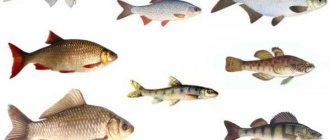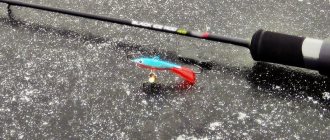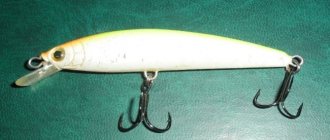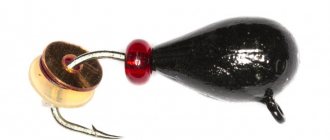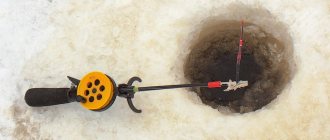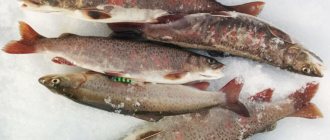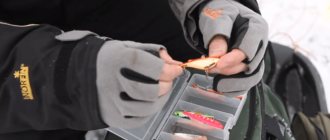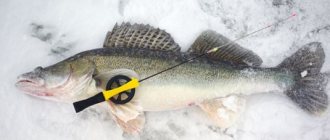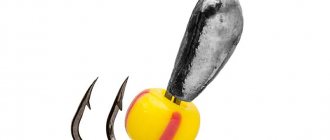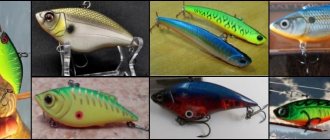Rotan is a somewhat unusual fish that can survive in almost any conditions. Even if she freezes in ice, in the spring she will be able to thaw and live as before. This predator can be caught in various bodies of water: river, lake, pond. However, as with any fishing, you should prepare for catching rotan.
Description of rotan fish
But first, let's understand what kind of fish this is. Rotan itself is a rather voracious predator; as a result, in almost any water area where it is located, it camouflages itself with the color of its environment. According to its color it can be:
- Absolutely black.
- A little greenish.
- Yellow.
- Brown.
- Gray.
The color of this predator largely depends on the shade of the water and the bottom. Many fishermen note that once in a fish tank, it can change color.
Typically the fish weighs about 500 grams. , body length is approximately 25 cm . The head of the predator is really large, with gills on the sides. Fish teeth The vision is excellent, with the help of which the fish sees perfectly underwater at a distance of up to 5 m. The fish has a large number of glands that secrete mucus, so the body of this fish is quite slippery.
Where does he live?
The homeland of this predator is the Far East. It was from there that it spread to other places. Today rotan can easily be found in the basins of large rivers: Volga, Dnieper, Don, etc. It is also common in standing reservoirs, where other types of predators do not live.
The most suitable bodies of water for catching rotan are the following: ponds and lakes. Because rotan is often the only predator there, so here it can reach really large sizes. Here he is comfortable and comfortable. However, if there is a pike or perch in a standing reservoir, then they have a significant impact on the rotan population.
- Number of aquatic vegetation. If you select a body of water for fishing for this particular predator, then you need to pay attention to aquatic vegetation. The predator feels best in places with rich vegetation. It is much more difficult to find rotan in clean water.
- Age of the water area. The older the body of water, the more large predators can be found there.
It should also be noted that at different times of the year, rotan behaves differently.
- Spring. In spring, rotan is quite active. When fishing for this predator in the spring, the main thing is to find a school of large individuals in a timely manner and select the most suitable bait for fishing.
- In the summer, the chance of a good catch of rotan is really high. But it is logical that you need to look for it in the thickets. The rotan swallows the bait quickly enough, so it is necessary to hook it in a timely manner, otherwise the hook simply will not be able to break through the mouth and the rotan will leave.
- At the beginning of autumn , it also hides in the thickets of grass; when the weather gets colder, it, like other types of fish, descends into the pits, where it sometimes remains in the winter.
- In winter, rotan also prefers to be in those areas where cold springs flow and streams flow. This is explained by the fact that fresh water brings oxygen, which, of course, the fish like.
Lifespan and spawning
Rotan has a fairly short life expectancy. Usually it is 6-7 years.
Rotan begins to spawn at 2-3 years of age. The spawning process itself occurs at a later time than in other fish, when they have already spawned and left the spawning grounds. Typically this happens in May-June . The fish spawns in portions, usually into aquatic plants. The eggs are guarded by the male. The emerging fry first feed on plankton and then move on to small invertebrates.
Nutrition
As noted earlier, rotan is a predator.
Adult representatives feed on leeches, small fish, fry, tadpoles, etc. In addition, there are even cases when this predator eats representatives of its own family. In small water areas, rotan can cause the destruction of other fish species. This is explained by the fact that these predators unite in schools and begin a real hunt for other species, devouring them until they are satisfied.
This fish prefers to eat for future use, so it is then inactive for a long time, digesting food at the bottom.
Due to the fact that rotan has a really wide and powerful mouth, it can swallow both 5 and 6-centimeter individuals without much difficulty. In addition to the fact that rotan feeds on fish living in the reservoir, it also loves insects from the surface of the water, and also finds all kinds of larvae in the soil.
Universal live bait for gudgeon
A universal live bait for catching pike and pike perch - gudgeon is shown in the picture.
True, already at the beginning of the winter season, schools of minnows move from the sandbanks to deep river channels, where the water is somewhat warmer and the current is less than in the rifts.
For this reason, searching for and catching minnows on rocky and sandy soils of reservoirs is associated with certain difficulties and, often, not quite close to the winter vents installed on the ice.
And these are not the places where you can catch perch instead of minnows as live bait for winter fishing. More likely, the brush will fiddle with the nozzles.
Fishing for gudgeon for the gudgeon
Considering the light weight of such live bait, the best tackle for catching gudgeons are float or nodding winter fishing rods with light bottom sliding sinkers.
Hooks for catching minnows are tied on small dark ones, with an elongated shank, and the fishing line is set with a diameter of 0.1-0.12 mm. The best universal bait on hook No. 3-3.5 (according to Russian numbering) is 1-2 bloodworms.
Placing a gudgeon on a gudgeon hook
To catch pike perch in the winter gudgeon, a gudgeon is placed on a single hook, piercing both lips of the bait fish; for pike, it is better to use a double hook with good hardening.
Three to four dozen minnows as live bait for fishing for pike and pike perch can live in a wide basin at above-zero temperatures on a winter balcony for about a month without changing water or bait.
After refueling winter gudgeons while fishing, it is advisable to gradually change the water in small portions in the canna with the remaining live bait.
Is rotan harmful?
Many fishermen note that if rotan appears in a reservoir, the number of other fish decreases. And that's a fact. This is explained by the fact that this voracious predator eats fry and juvenile fish, eggs. This picture is more typical for small ponds.
But there is also the opposite situation. For example, in water areas where previously there were only crucian carp, fishermen often caught only small fish. When rotan appeared, larger individuals began to be caught. This is due to the fact that this predator began to eat crucian carp fry, and larger individuals began to have more food. However, in the long term, this can also lead to the extinction of a given species in a particular body of water.
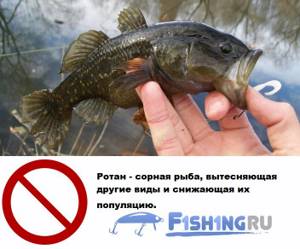
We can talk about the benefits and harms of rotan for a really long time, but we need to accept the fact that this predator has become a full-fledged inhabitant of many reservoirs, which is quite actively caught. Many people fry rotans, smoke them, and make sprats.
Important ! Rotan can become a source of the common helminthic disease nanophyetosis! (Parasitic worms.)
How to avoid getting sick? Properly thermally process fish, do not violate the rules of storage and freezing.
Summer fishing gear
Rotan is an unpretentious fish and can be caught with any tackle. It is very easy to catch him with a fishing rod. Because of his gluttony, he does not pay any attention to how the bait is served to him and what it consists of. To successfully catch rotan on a pond in the summer, you must have the following accessories:
- a fishing rod whose length is five meters;
- fishing line 0.1 or 0.15 mm thick;
- the float will suit any design;
- a large barbless hook with a long shank.
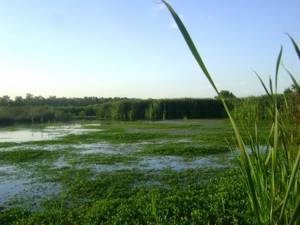
A leash is not used when catching this predator; the hook is tied to the main line. Its color and thickness are indifferent for rotan, but a large hook must be used. The voracious fish swallows the bait deeply and problems arise when removing the hook from its mouth. That is why it is necessary that he does not have a goatee. You need to attach a nod to the rod to make it easier to monitor bites. That's all you need to catch rotan; all the gear is very simple and inexpensive.
Photo of rotan fish
To open a photo in higher resolution, click on the image.
Fishing for rotan
This predator is caught in many ways. The most common are the following:
- Float rod.
- Spinning.
- A fishing rod with a side or regular nod.
It is important to note that rotan is not caught using a bottom fishing rod. This is due to the fact that rotan is located in the coastal zone, where it can be easily reached with a float rod, and this fish bites most intensively on active bait.
Let's look at these types of fishing in more detail.
Fishing with a float rod
The correct choice of bait plays an important role in successful float fishing. Rotan bites well on:
- Worm.
- Maggot.
- Malkov.
- Leech.
- Snails.
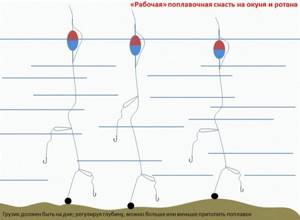
This predator fishes best on a float rod before the ice sets in, namely in October and November. Its activity can be compared with the intensity of biting on first ice. The design of the float rod on rotan is identical to the Bolognese one, i.e. There is no need to demand special elegance and sophistication from the gear, because... Rotan is not difficult to catch without complex tricks.
Fishing technique
- First, the fishing depth is determined.
- This depth is selected on the fishing rod, because the hook should be located at the bottom; if you are fishing with live bait, then it should be above the bottom at a distance of 10-15 cm.
- Actually, now the tackle needs to be cast.
- While waiting for a bite, do not forget to twitch the rod from time to time so that the bait plays in some way, attracting the predator. If you are fishing with live bait, then you need to slightly move the bait.
- Rotana should be pruned in a timely manner. Determining this if you are catching this predator for the first time is not at all easy, because rotan can approach the bait, swallow it and simply suck it further. And if you hook ahead of time, you can simply pull the bait out of the fish’s mouth without allowing it to catch.
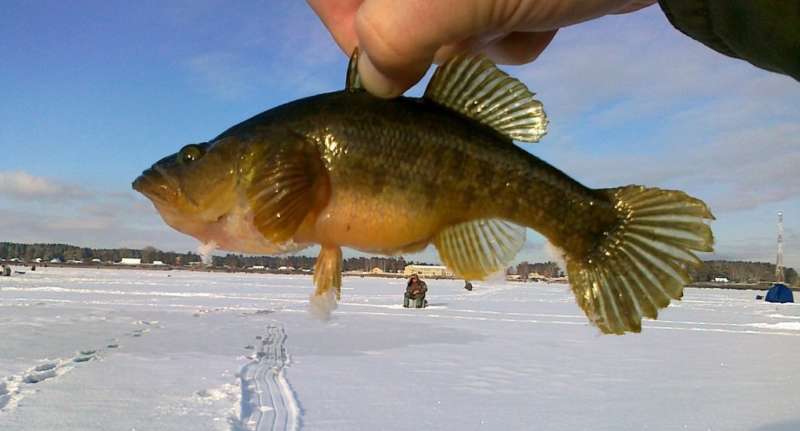
Rotana lifestyle
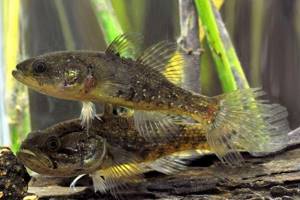
A rotan can be described in a nutshell as follows: a very voracious sloth. He is not a fan of chasing potential prey like a river perch. More often it attacks fish swimming, as they say, in front of its nose or eats worms and insects.
Behavior in different periods
The behavior of rotan depends on the time of year:
- In early spring, on the last ice, this fish actively moves around the reservoir in search of food. Most often at this time it can be found near the shore at a depth of 1.5-2 meters, near the confluence of melt water streams into the reservoir.
- In mid-spring, the firebrand actively feeds near the shore in thickets of aquatic vegetation, eating the eggs of other fish species laid on the grass;
- In summer, during the hottest months (June-July), the firebrand is very passive most of the day, hiding in thickets of bottom vegetation, under snags, and in various rubbish lying at the bottom. The fish usually feed early in the morning, before the water warms up much. Also late in the evening, when it had already cooled down.
- In autumn, as the water cools, rotan moves to deep holes and pools. At this time he no longer feeds in the morning and evening. This continues throughout the daylight hours.
- During the first ice, rotan actively feeds near the coastline among the grass that has not yet had time to rot.
- In the dead of winter, most of this fish accumulates in deep holes. Only occasionally do they leave them to feed in nearby irrigation areas and shallows.
There is practically no bite during the spawning period and for several days after its completion.
What does rotan eat?
The fry feed mainly on bottom microorganisms, bloodworms, and larvae of aquatic insects. In addition to aquatic insects, larger firebrands also eat small fish. They also eat tadpoles, frog or fish eggs, and devour their smaller brothers.
Recommended reading: How to catch pike perch with a jig
Reproduction and lifespan
The firebrand spawns in late spring early summer at a water temperature of at least +12+15C
The female lays eggs on bottom vegetation and various objects lying on the bottom. The male does not swim away from the clutch before the fry appear, fanning the eggs from debris and silt falling on them. The fertility of one female reaches 1000 eggs.
The average lifespan of a firebrand under normal conditions is no more than 7 years. In isolated, hard-to-reach reservoirs, it can live up to 10 years of age.
The influence of rotan on other fish species

The firebrand causes enormous harm to the population of other peaceful fish in the reservoir. This is expressed in the following feeding habits of this fish:
- Being a greedy predator that does not grow to large sizes, it destroys many small fish, which not every pike will hunt;
- The firebrand, which spawns later than many other species, eats their eggs, which leads to a significant decrease in the number of such valuable fish species as crucian carp, carp, and silver carp.
All this makes this type of fish undesirable, and in pond farming, not at all permissible for settlement in a particular body of water.
Is it possible to eat rotans?
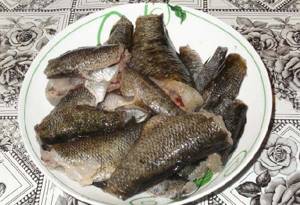
Despite common misconceptions, the fish is quite edible, has white meat and a sweetish taste. Due to the small number of bones, it is consumed fried and dried, fish soup and minced meat are prepared from it.
On a note! It is undesirable to cook in any form fish caught from water bodies heavily polluted by sewage, garbage, organic and mineral fertilizers.
The reason is trivial - the body of a fish that has adapted to dirty water accumulates harmful substances. There can be no talk of any benefits from consuming such a product.
Rotan is a fish that is interesting to catch, can be eaten, and used as live bait. At the same time, we should not forget that this voracious small predator should not be released into reservoirs in which it is not present.
Side nod and winter fishing rod
Winter fishing rod with jig for perch and rotan.
We have combined these two types of gear due to the fact that they are very similar. More detailed article on winter fishing for rotan. Both here and here the same equipment and the same baits are used. The whole difference is that the fishing methods and the actual sizes of the rod differ.
The equipment of the nodding fishing rod in both cases is absolutely identical:
- Fishing rod.
- Nod.
- Fishing line.
- Spinner or jig.
- Bait.
The spinner or jig in this gear is used to visually attract rotan, and the bait itself forces the rotan to show itself and bite.
How to play?
The game itself is quite simple; you need to periodically pull the fishing rod, remembering to pause. Some fishermen in winter prefer to make several holes and walk from one to another, playing each one periodically.
Watch a video on catching rotan in the dead of winter on thick ice, youtube:
Fishing with live bait
If you decide to catch rotan with live bait, then the equipment is not particularly different from a standard fishing rod. It is equipped with the following elements:
- With a noticeable gatehouse;
- The standard line is about 0.2 mm.
- Sinker.
- Stopper.
- Matching hook.
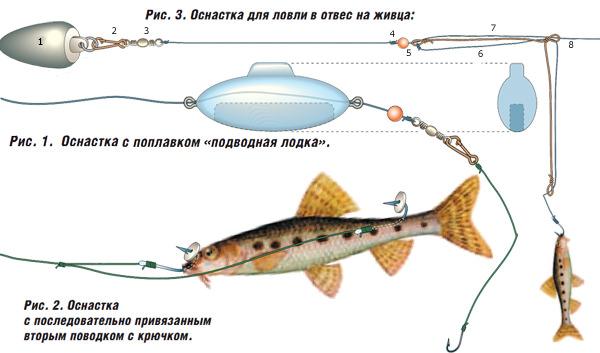
The hook is placed on the baitfish's back and/or mouth and lowered into the hole. In this case, the depth should be selected in such a way that about 10-20 cm remains to the bottom. When catching rotan with live bait, you can catch a really large predator, although medium-sized predators are also caught with live bait.
Features of catching rotan
- This predator is liked by many anglers for its persistent and simple bite. He swallows the bait really deeply.
- In a reservoir it can be located in all layers , so when fishing you should select the most suitable depth.
- If the hooking was too early and the rotan broke, then you should not worry that it will go far. Often, if you lower the bait into the same place, the rotan will start biting again.
- This predator prefers quiet bodies of water, with virtually no current . If the reservoir does not freeze, then you can catch it throughout the whole year.
- It has been noted that large rotan prefers a “sandwich” rather than bait of the same type.
- In autumn and early winter, larger rotans prefer animal baits .
- He doesn’t pay much attention to the fishing line, so there’s no need to use too thin one.
- Rotan is very well caught in the presence of vegetation in the reservoir , because that's where he likes to hide.
- This predator usually bites where it stands. He waits for prey, and does not search for it throughout the entire body of water, like a perch.
- The most optimal time for catching rotan is April and May , when the reservoir is completely free of ice. The fact is that the fish strives to accumulate strength for spawning, so its gluttony is almost constant. And it is caught using completely different baits.
These are the most important features of a predator such as rotan, which should be taken into account in the process of preparing for fishing.
Live bait for winter bait
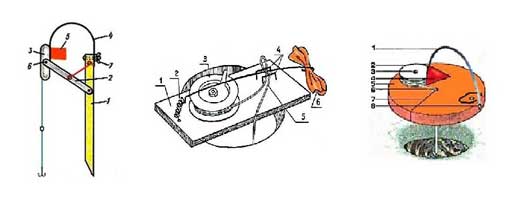
Small representatives of a wide variety of fish are used as live bait for winter bait intended for catching pike perch and pike perch. But the best bait for attaching to the tee of a girder is considered to be the live bait that is included in the daily winter diet of predatory fish in a particular reservoir.
Most often pike are interested in live bait during winter fishing, much less often - pike perch and large perch; it happens that burbot is caught using live bait gear.
Taking into account the specifics of winter fishing for burbot with live bait, it does not have to be a girder with a reel-to-reel line spreader. Many fishermen consider the ruffe to be the best live bait for catching burbot.
Depending on the method of filling the winter bait with bait and the convenience of catching small fish in a particular body of water, each fisherman can have his own “favorite” live bait, including minnows.
To refuel winter baits for pike, some fishermen believe that there is nothing better than medium-sized crucian carp, and to catch large perch using a jig with fry, they prepare top-smelting fish.
Although, often during winter fishing, when there is no bite, the pike raises a flag on a girder filled with a not so large topwater. Undoubtedly, pike perch will not refuse such live bait on the winter bait.
But the best universal live bait for refueling winter and summer baits for catching pike, pike perch, and burbot is considered to be a gudgeon, which you can sometimes buy in specialized stores before fishing. And it seems that for this reason the gudgeon population in many small rivers is not declining.
In principle, any fish that has long survivability on the hook is suitable for pike as live bait, both in winter and summer fishing.
Just don’t forget about one feature of the life of predatory inhabitants of winter reservoirs. By spring, the abdominal cavity of most fish becomes filled with eggs.
Therefore, if the pike does not disdain relatively large bream on the first ice, then in order to fill the girders for the pike by the end of the winter season, it is better to catch before or directly during fishing more compact live baits of not such a wide shape.
